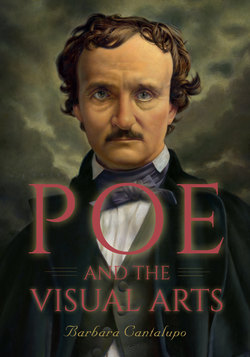Читать книгу Poe and the Visual Arts - Barbara Cantalupo - Страница 8
На сайте Литреса книга снята с продажи.
ОглавлениеAcknowledgments
______________
_______
My most heartfelt thanks go to two men: my mentor and esteemed Poe scholar, the late Burton R. Pollin, and my husband, Charles Cantalupo, poet, scholar, and much-admired professor. Each, in his own way, helped make this book better: Burton’s extensive knowledge of Poe’s work and Charles’s expert advice on clear and engaging writing have both been invaluable guides. A year before his death in 2010, Burton mailed me a folder containing his handwritten notes on Poe’s references to painters, carefully matched to pages in James Harrison’s edition of Poe’s work—what an important key! All of Burton’s Poe publications are a scholar’s treasures. Throughout the time I had the privilege to know him, Burton was always available at the end of a phone line or in response to an email to help guide me in fruitful directions in my research or to fill in the gaps of my knowledge of Poe. He is much missed. Both Burton and Charles not only shared their expertise but also encouraged me to finish this book because, as they each reiterated many times, this topic is an important contribution to Poe studies. Many thanks also go to Richard Kopley for his encouragement, knowledge of Poe scholarship, and access to his incredible Poe collection; he has been a steadfast friend and colleague.
I have loving regard for my children’s respect for my intellectual pursuits: Alicia and Alexandra, my youngest daughters, showed understanding and patience when I was away doing research during their growing-up years, and Elizabeth and Christopher, my two oldest, watched me spend years as a single parent getting my Ph.D. while they were just youngsters. Important to my ongoing commitment to research and learning is knowing that my work has been a model to all of my children. It gives me pleasure to see that Liz and Chris are doing their own publishing in languages I don’t know—French and Python, respectively—and that my two youngest will someday make their own marks through violin performance.
My thanks go to The Pennsylvania State University and to my campus, Penn State Lehigh Valley, especially Kenneth Thigpen, director of academic affairs, for their ongoing support of this project. I also want to thank Judy Mishriki, Penn State Lehigh Valley’s research librarian, for her guidance and help tracking down obscure references. I am very grateful to Loretta Yenser for her copyediting and organizational help with the final draft of the manuscript; her assistance was invaluable.
Thanks also go to Nicole Joniec, Print Department assistant and Digital Collections manager at the Library Company of Philadelphia; Liz Kurtulik of the Permissions Department at Art Resource; Melanie Neil, assistant registrar at the Chrysler Museum of Art; Allison Munsell, digitization specialist at the Albany Institute of Art; Alexandra Lane, rights and reproductions manager at the White House Historical Association; Joan Albert of the Virginia Historical Association; Sandra Stelts, curator of rare books and manuscripts at The Pennsylvania State University Libraries; Jaclyn Penny, rights and reproductions coordinator at the American Antiquarian Society; and Peter Roiest of the Koninklijk Museum in Antwerp, who provided valuable information on Jean-Baptist De Cuyper, as well as Marcos Pujol for his guidance and support during my research trip to Antwerp.
I have much respect for and feel very grateful to Julie Schoelles at The Pennsylvania State University Press for her incredibly attentive copyediting and the care she gave to the manuscript. And, of course, I am grateful to Kendra Boileau, editor-in-chief, and all of the staff at the press, including Robert Turchick, for their excitement about the project and their support throughout this process.
